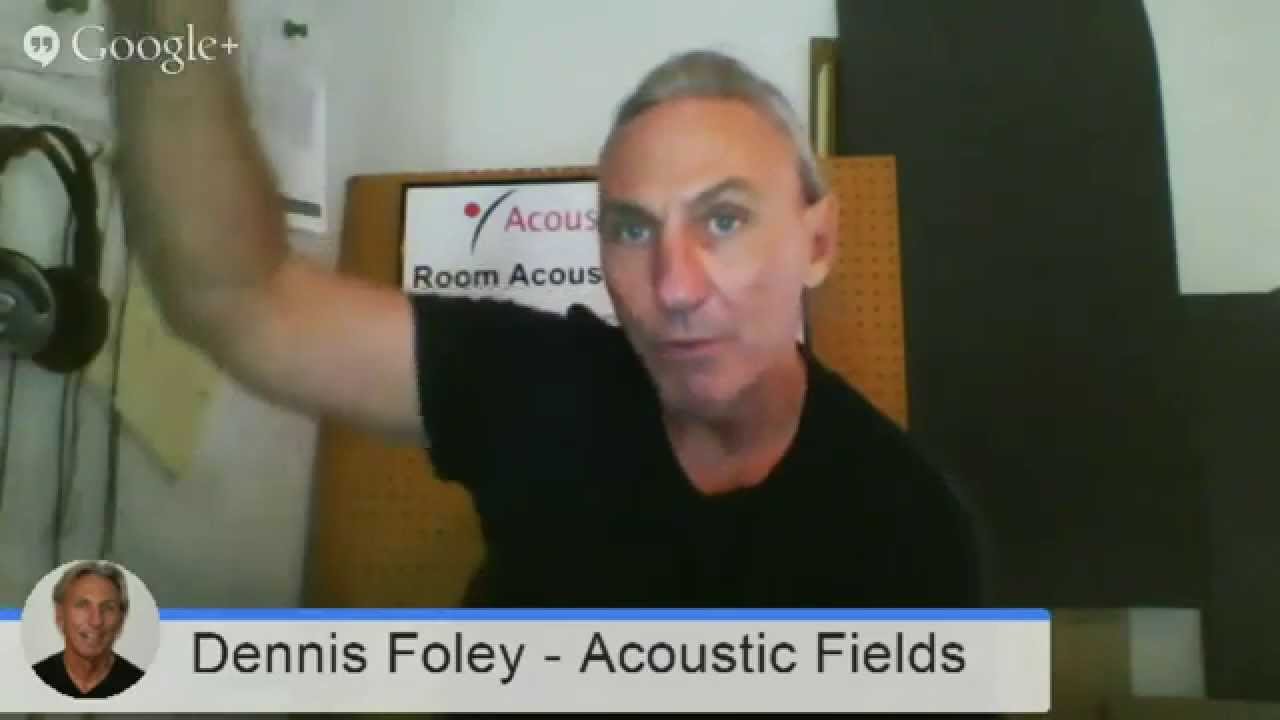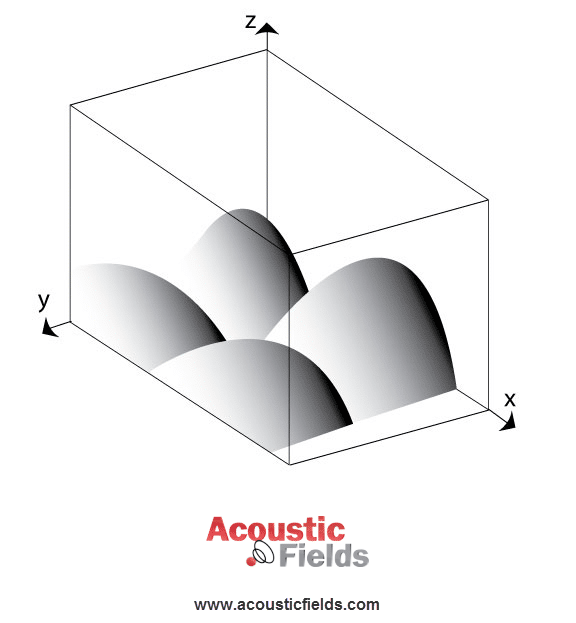In last weeks Google Hangout I was asked “What are standing waves in room acoustics?” Well standing waves are unwanted pressure areas in your room that form between three plains in your room. Plain one is the axial pressures which is between two parallel surfaces, namely both side walls, the front and rear wall, the floor and the ceiling. Secondly we have tangential, we have four surfaces that’s four walls, two side walls, floor and ceiling, two front walls, two side walls, all kinds of combinations and then the oblique are six surfaces. So the oblique are never that much of an issue, we don’t see them too often but you do see them sometimes. So those on the surface areas that standing waves occur between.
Now what are standing waves? Why are they called standing waves?
Because they’re waves that hang out, they stand around, they occupy about three-foot of space in your room. They can run floor to ceiling, they can run sidewall to front wall, they can run corner to corner, they can be right next your seating position and we found in our testing in all the rooms we built, they’re about two to three foot wide.
And isn’t that nice that our low-frequency technology is two to three foot wide? See there’s reasons for everything. They’re these columns or pockets of energy in the room where the length of the wavelength the low frequency energy, let’s say 40 cycles, so 40-cycle wave tries to fit between the two side walls and it doesn’t like the dimensions of those side walls because they don’t work well with the dimension of the low-frequency wave and there’s all kinds of physics behind that but let’s just for purposes of this discussion say the 40 hertz wave can’t fit.
It’s like trying to put a size six shoe on a size twelve foot, it just doesn’t fit. When it doesn’t fit it builds up, creates pressure and that’s your standing wave. It’s that inability to fit between that room dimension, since it can’t fit it’s almost like forcing itself to fit and that forcing of itself to fit in that two-wall space, four-wall space, six-wall space creates unwanted pressure.
Now it doesn’t last forever but it does have a beginning and an end point, it has a time signature on it. Obviously that time signature is dependent on how many drivers you have in the room producing that 40 hertz energy, what the proportional ratio is to the length the wave itself, all kinds of other variables.
Think of standing waves like the annoying loud guy in a bar
A standing wave is a wave of energy standing around and causing all kinds of problems. It’s kind of like that guy at the bar who’s really loud and annoying. Well he’s a standing wave and that’s what you have in your room. He’s had a little bit too much to drink and he’s really loud. Now he ain’t going to be like that forever but for a brief moment in time and space he will be.
Now you get your room full of those things and you have unwanted 40 hertz, unwanted 50 Hertz, unwanted 60 hertz, unwanted 70 hertz guys and so you’ve got a room full of guys that are loud and not fitting in correctly and the problem with that is that they cover up the other people that want to talk. They cover up the other frequencies that need to be heard, they smother and blur your middle and high frequency, they distort the time signatures of reflections, they’re just nasty creatures and you need a technology that’s pressure reactive because a standing wave is standing because of pressure.
He’s not standing because of molecular velocity or air movement. That’s just crazy and that’s what a lot of these acoustic products manufacturers will have you believe. That’s why they tell you, foam and boxes filled with building insulation are bass traps. They confuse air movement and molecular speed with pressure and there’s all kinds of reasons why they do that.
One reason is they don’t design their product to deal with the pressure but they want you to think that their product does so they’re going to tell you that it does when it can’t. And then secondly they just don’t have the skill set to design that kind of technology nor want to maybe because it’s too expensive.
Well that’s not what we’re about, we’re about real solutions we’re not Band-Aids. Yes our stuff costs more but it works better. So you just have to decide do you want more Band-Aids or do you want to fix the problem and move on? That’s the philosophy we subscribe to.
Time To Get The Standing Waves Out Your Bar!
Think of the standing wave in your room as that guy in the bar and above him is our ACDA-10 unit at 200 pounds. If the guy is too loud we just push a button and the unit falls on him. When the unit falls on him he’s no longer loud anymore and we don’t have a standing wave. That’s the same principle we use in acoustics. We find the location of the problem, we find the location of the standing wave and we drop a sponge right into the wave, right into the core of the pressure, right into the eye of the hurricane so to speak.
Now that sponge has carbon in it, that sponge is designed to deal with pressure not air movement. If you drop foam into the standing wave or you drop a box filled with building insulation on the standing wave, it doesn’t care as they’re not pressure devices, not pressure activated devices, they can’t work. They might work a little bit depending on how deep they are. But they can’t really work to absorb 10, 15, 20-dB of pressure. They can’t, there’s just no way. Now diaphragmatic absorption can, diaphragmatic absorption with carbon in it, really can and that’s why I created that series.
In Summary
If you would like your room acoustic issues analysed for free by me then please fill in the form here and I will be happy to take a look for you.
Thanks
Dennis








